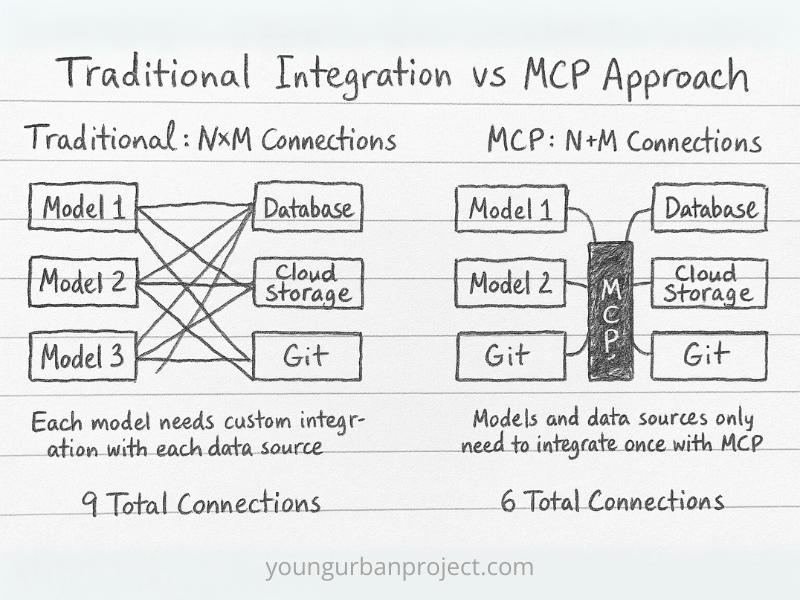MCP Series Episode 1: A brief introduction of MCP
Published:
Introduction
Like many technology trends, the Model Context Protocol (MCP) emerges from an existing, well-established pattern. Is like following a famous principle that says that nothing is created from scratch, but everything is transformed from something else.
In particular, I remember quite well a similar problem that was introduced in 2018 with the Language Server Protocol (LSP).
The MxN problem
In that age, with the rise of cloud computing and modern IDEs (like Visual Studio Code, Theia, Eclipse Che, Atom, etc.), there was a quite common problem: every time a new IDE was created, it was necessary to implement from scratch the basic capabilities of a programming language within an IDE like auto-completion, formatting, variable inspect and so on.
It would be a very smart move if I could implement a language functionality once and reuse it and bring it with me on multiple IDEs, right?

Credit:https://code.visualstudio.com/api/language-extensions/language-server-extension-guide

Credit:https://www.youngurbanproject.com/what-is-mcp/
Applying the same principle, the rise of AI models and the application built on them (like ChatGPT, Perplexity, or custom enterprise assistants) introduced exactly the same challenge.
A protocol specification to move on M+N complexity
So in the same way as was done for LSP, a standardization through a standard protocol (JSON-RPC) reduced the complexity from MxN to M+N where M in this case is the group of AI models and N is the number of tools.
When an AI model support the MCP protocol in practice say that is able to accept in a plug-and-play style a potentially infinite set of resources, such as a company’s internal documentation, a user’s personal calendar, a project management board, or a real-time stock market feed, that extend and improve the effectiveness of the model, for every model (today and in the future) that comply to the standard.
Let’s be a bit more formal, the MCP protocol definition
The protocol, introduced as an open standard by AI safety and research company Anthropic, can be summarized in this way:
The Model Context Protocol is an open standard that enables developers to build secure, two-way connections between their data sources and AI-powered tools.
The immediate consequence of this architectural decision is that it is possible to work on two distinct approaches:
Made available resources to the AI model - made available through a
MCP serverExtend the capability of an AI model to be pluggable with resources through a
MCP clientthat can communicate with one or many server(s).
For those who are eager to get their hands dirty, I suggest getting your hand dirty following this tutorial or also this nice training.
If you prefer a watch, so I’ll learn better, I watched this YouTube workshop that I want to recommend.
For those who prefer a bit more of a lagging approach, they can wait till the next episode, where I will present in more detail the actors involved in the MCP protocol.
A.
References
© 2025 Andrea Zaccaro. All rights reserved.
